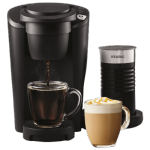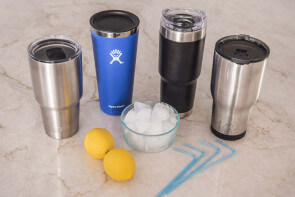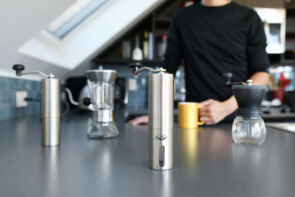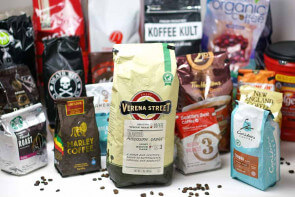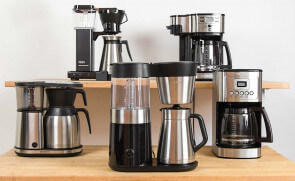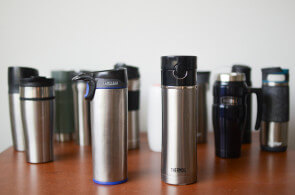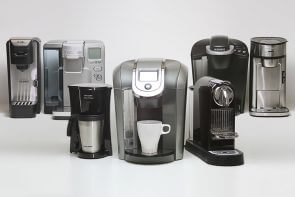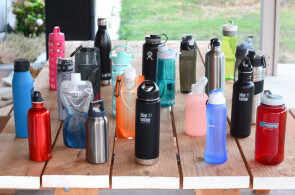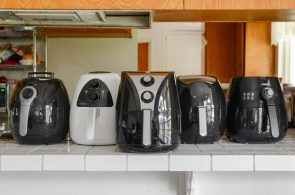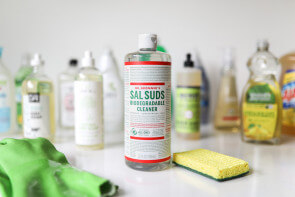
The Best Keurig Machines
Over the past two weeks, we have brewed dozens of cups of coffee, testing the five most popular Keurig machines on the market in our quest to find the best one. From this research, we found that the best Keurig overall was the K-Elite. With a large water filter, built-in reservoir, and multiple brewing options, it’s coffee at its most convenient.
Over the past two weeks, we have brewed dozens of cups of coffee, testing the five most popular Keurig machines on the market in our quest to find the best one. From this research, we found that the best Keurig overall was the K-Elite. With a large water filter, built-in reservoir, and multiple brewing options, it’s coffee at its most convenient.
Table of contents
- The 5 Keurig machines we tested
- 1. Best overall: K-Elite
- 2. Best latte machine: K-Latte
- Other products we tested
- How we selected
- How we tested
- The Keurig controversy
- Important features to consider
- The bottom line
The 5 Keurig machines we tested
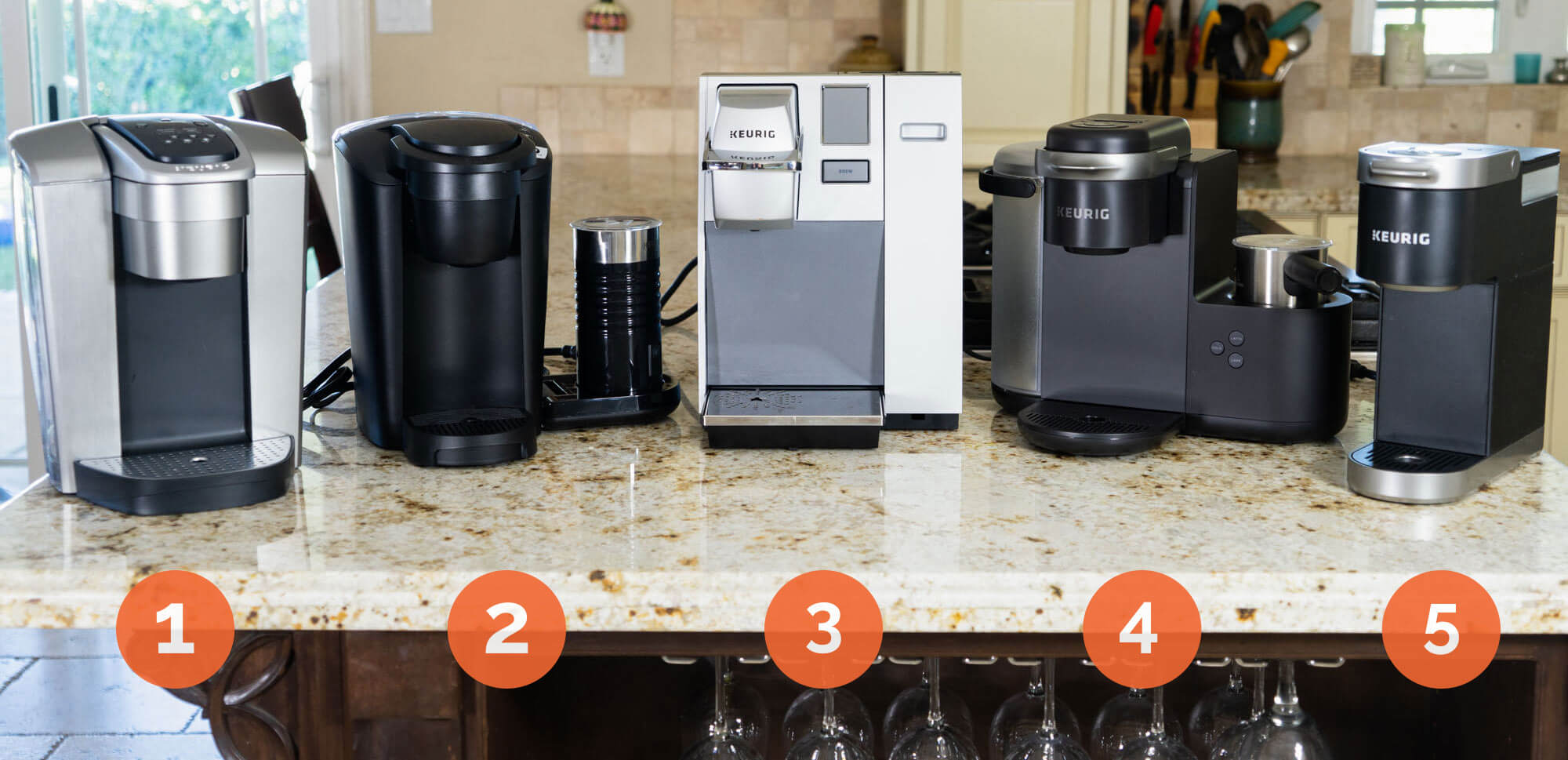
| Keurig Product | Price | Reservoir Capacity (Ounces) | Cord Length (Inches) | Extra Brew Options |
|---|---|---|---|---|
| 1. K-Elite | $$$ | 75 | 12 | Stronger brew, iced |
| 2. K-Latte | $$ | 36 | 36 | Coffee shot |
| 3. K155 OfficePRO | $$$$ | 90 | 56 | N/A |
| 4. K-Cafe | $$$ | 60 | 27 | Coffee shot |
| 5. K-Mini Plus | $$ | 12 | 24 | N/A |
1. Best overall: K-Elite
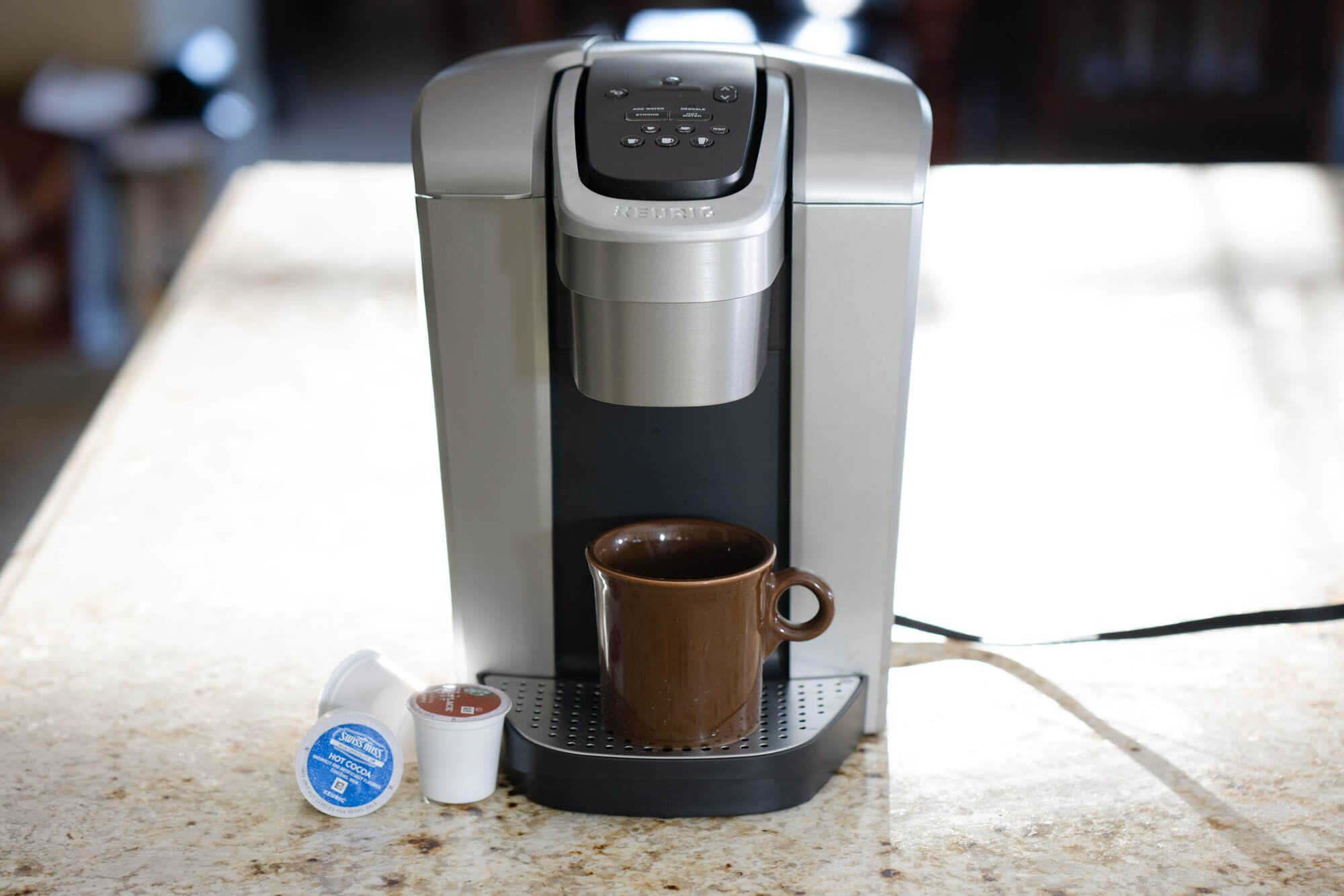
While testing, one major thing stood out about the K-Elite: you do not have to refill its water reservoir nearly as often as the other machines. This sounds obvious, but its 75-ounce water capacity really makes it handier than the other Keurigs we tested.
Our testers also liked that this Keurig has a water filter. If you prefer making coffee with filtered water, this is an obvious choice for you. However, even if you don’t mind the tap, the water filter is supposed to extend the life of the machine overall, as fewer impurities should build up within it. Installing the filter in the reservoir was not hard, but it did require reading the manual.
The K-Elite brews four, six, eight, 10, and 12 ounces of coffee, meaning you can fill anything from a tiny cup to a travel mug. It also offers “strong” and “iced” options, but we didn’t find these options helpful, as our testers preferred the normal brew strength.
On its default setting, this machine served coffee at about 161 °F. This was on the low side of our finalists — about the same temperature of coffee produced by the K155 and K-Mini Plus. However, our testers did not make any remarks about the coffee temperature being too cold. Also, the K-Elite was the only Keurig we tested that can be programmed to brew at higher temperatures, up to 192 °F. You can change the default temperature of the K-Elite in its settings menu, which is a big plus if you are picky about your coffee temperature.
This Keurig was the fastest to heat up, taking only about thirty seconds. Its automatic turn-on feature also means that you can skip these thirty seconds in the morning by programming the machine to heat itself up at a certain time. This means that after you press the brew button, you only have to wait 45 seconds while it brews.
Our testers thought that this Keurig was the most complicated to use because of its many features. When setting up this Keurig, we were immediately asked to program the time, altitude mode, and automatic turn-on time. While all of these features are useful, we had to consult the manual to figure out how to program them.
This machine does take up a fair amount of counter space at 13.1″ H x 9.9″ W x 12.7″ D. It also has the shortest power cord, measuring only about 1 foot. However, it has a sleek look that’s aesthetically appealing on a counter.
Overall, the K-Elite takes our top spot because when you wake up in the morning you want coffee fast — this machine delivers on that. The last thing anyone wants to do is mess with a water reservoir first thing in the morning. The K-Elite delivers on convenience, which is why consumers are attracted to Keurigs in the first place.
This Keurig runs at about $160, which is a relatively mid-range price for a Keurig machine. If you are buying a Keurig to make your life more convenient, we believe the K-Elite is worth the extra coin.
Key takeaways:
- The K-Elite was our fastest-brewing Keurig machine.
- This machine’s 75-ounce water reservoir means you won’t be constantly refilling this machine.
- The included water filter is a plus for those who prefer filtered water; the machine may also have a longer life for this reason.
- This machine’s short power cord and large size limit its movability in the kitchen.
2. Best latte machine: K-Latte

The K-Latte was nearly our first pick because of its bargain price (about $100), milk frother, and simple design. If you have any interest in using your Keurig machine to make cappuccinos and lattes, this is the best machine for you. However, we found the K-Elite to be better overall because it beat out the K-Latte in crucial areas such as brew time and reservoir size, which make a difference in day-to-day use.
The K-Latte’s reservoir is 36 ounces, which is significantly smaller than the K-Elite’s reservoir. However, this machine is not much smaller than the K-Elite because of its attached milk frother. The milk frother’s base is attached to the bottom of the machine but can be folded up. This means if you are not using the milk frother you can fold in its base, and then store the frothing cup in a cabinet. This is much handier than the other latte-making Keurig — the K-Cafe.
This milk frother worked well, taking about two minutes to froth and warm milk to 150 °F. While this machine is frothing milk, you can use the coffee portion to brew a shot of coffee. However, you cannot brew a regular cup of coffee while the machine is frothing milk.
While our testers did not think that these lattes tasted as great as their store-bought competitors, they were still pleased with the results, which took only about two minutes to make once the machine heated up.
This machine took one minute and fifty seconds to heat up and one minute to brew — a relatively slow time for our finalists. However, the resulting coffee was among the hottest of our competitors, measuring 175 °F. Therefore, if you like your coffee extra hot, this is your best pick.
Our testers also thought that this Keurig’s interface was very simple to use. Aesthetically, this machine looks a little funny because of the attached frother, but its black design won’t stand out on your counter. Its power cord is also much handier than the K-Elite’s, measuring about 40 inches.
The K-Latte is only available at Walmart or by phone order from Keurig because of Keurig’s exclusive agreement with Walmart. Its price is a bargain at about $100, especially when you consider Keurig’s other latte machine, the K-Cafe, rated poorly with our testers and costs an additional $50.
Key takeaways:
- The K-Latte was our best latte maker because of its bargain price and easy-to-use design.
- This machine’s milk frother can be detached and its base folded up, making this machine much handier than the K-Cafe.
- The K-Latte has a smaller water reservoir, holding only 36 ounces, meaning you will have to fill it up more often.
- The K-Latte served one of the hottest cups of coffee of our finalists.
Other products we tested
3. K155 OfficePRO
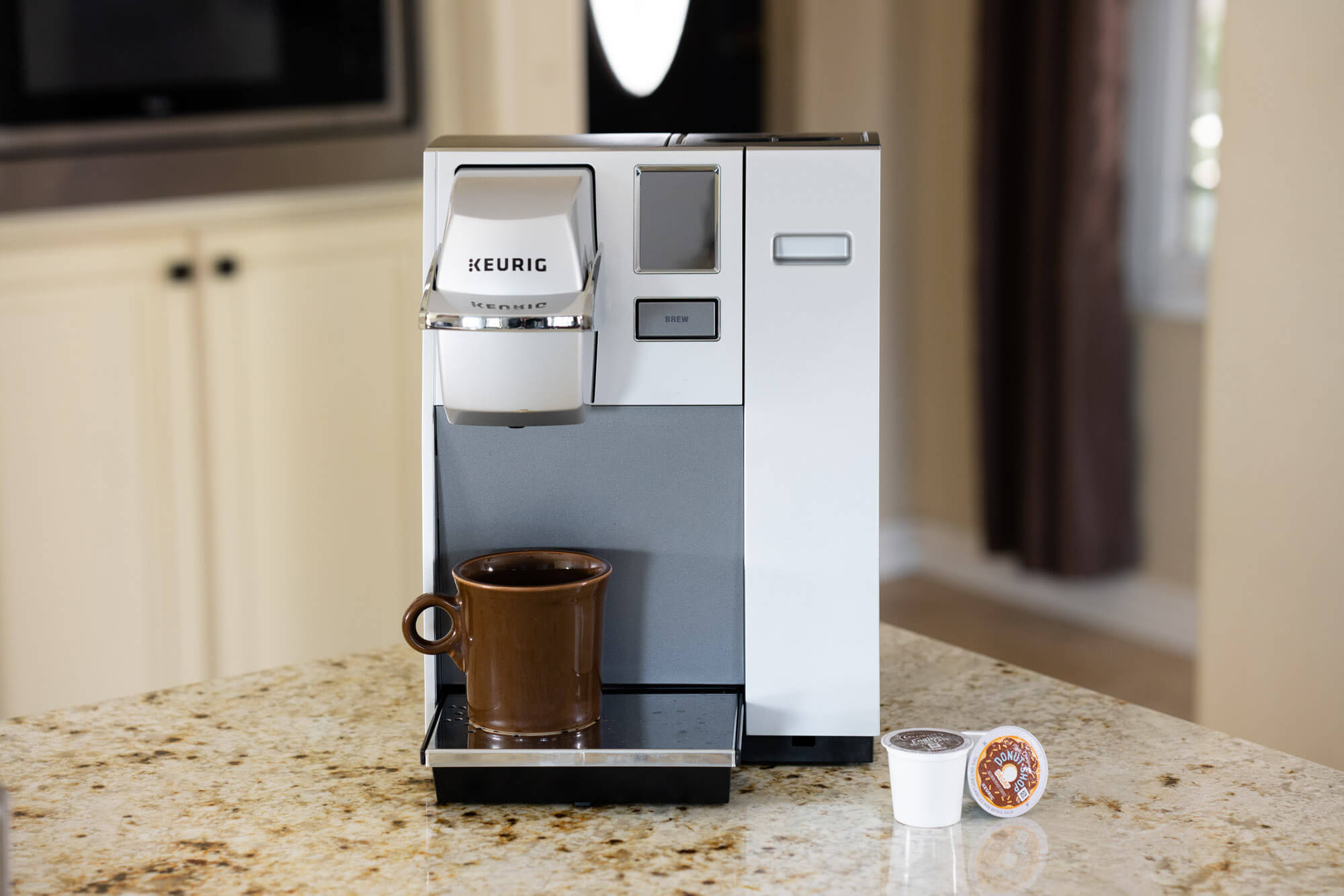
This Keurig performed well with our testers but was not our top pick because of its high price — upwards of $250. This machine shined when it came to ease-of-use and water-reservoir size and performed on par with our other finalists for speed and temperature.
The K155 had the best display of our finalists by far. Our testers loved its easy-to-navigate digital display. This machine does not offer many extra features, which makes using it really easy. All you are asked to do is select a four, six, eight, or 10 ounces and brew.
The huge water reservoir (90 ounces) is also a big plus for this machine, which is marketed to work for small offices. If you were using this machine in an office setting, this large water reservoir would be really useful, so employees would not have to continually fill its tank.
However, we still cannot justify its $250 price tag from its ease-of-use and water capacity alone. Where are the extra features? A water filter or automatic turn-on feature would also be very helpful for a small office. We believe that even with its smaller 75-ounce tank, you could use the K-Elite for a small office and get these bonus features for a cheaper price.
4. K-Cafe

The K-Cafe comes with a milk frother and a coffee shot option like the K-Latte. However, its poor design and similar speed performance to the K-Latte leave us wondering why it costs about $80 more than the K-Latte.
This machine design is less handy than the K-Latte’s because its milk frother cannot be folded in. This means you always need space for a Keurig machine with an attached milk frother, which measures 15.3 inches in total width. One of our testers thought it also made the machine look a bit “goofy.”
The K-Cafe’s performance testing was largely on par with the K-Latte’s. It also brewed one of our hottest cups of coffee at 175 °F. It took a similar two minutes to heat up and 45 seconds to brew. Also, its frother also took two minutes to froth milk to 155 °F (just five degrees hotter than the K-Latte).
The only justification for the increased price of the K-Cafe we could find was the larger water reservoir, which holds 60 ounces. This is a big factor in handiness as we have mentioned before, but we do not believe it to be handy enough to justify spending an extra $80, especially considering this machine’s cumbersome design.
5. K-Mini Plus
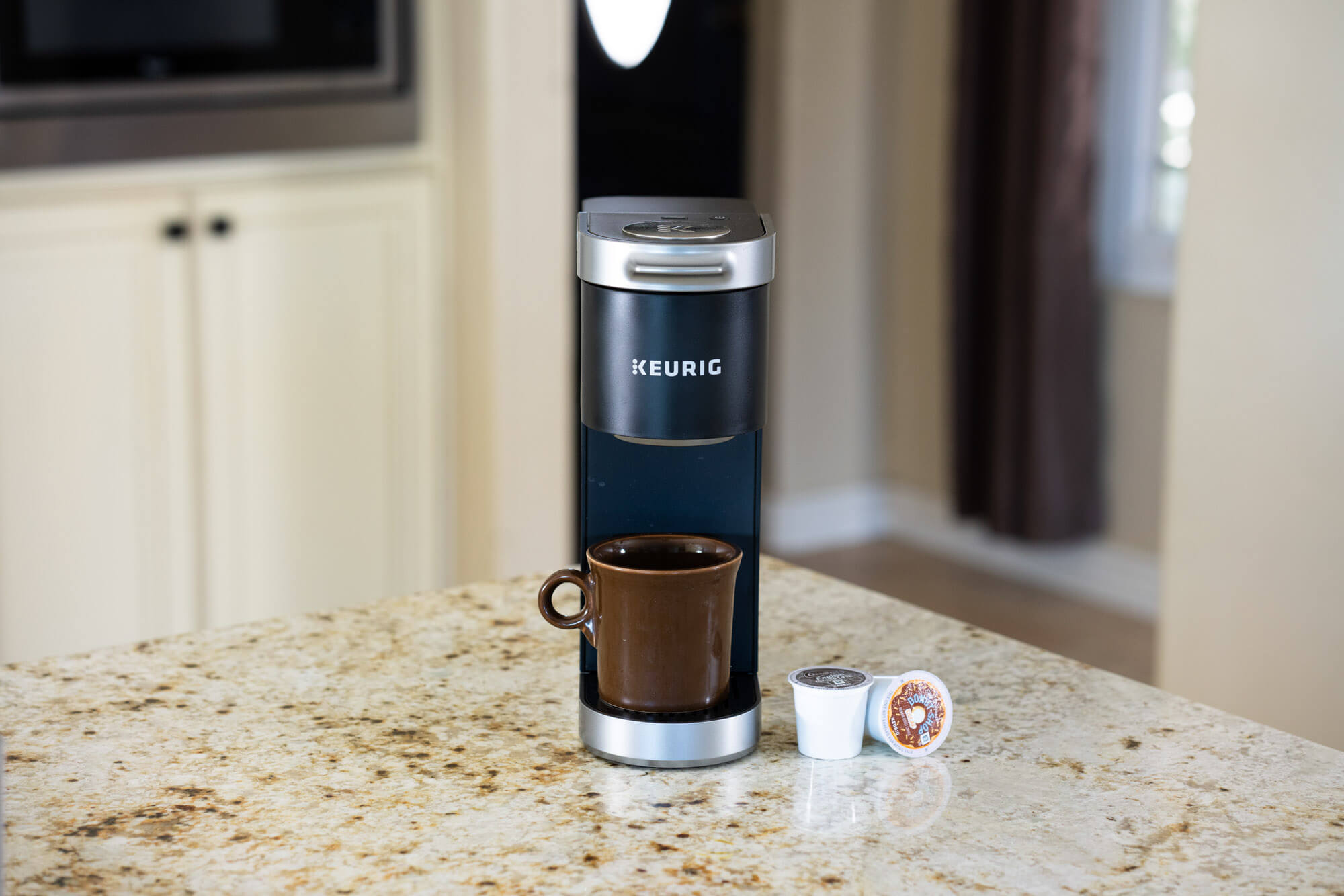
This was the smallest and most stylish of our finalists. However, those were the only areas this machine really delivered on.
The K-Mini Plus requires you to put in the amount of water that you would like for each individual cup of coffee. For example, if you want an eight-ounce cup of coffee, you put eight ounces of water into the machine before brewing. To heat and brew, this machine takes about two minutes total. This left us asking — why not just use a French press?
If you have to put in the exact amount of water for each cup, the only conveniences you are saving for yourself by using the K-Mini Plus are not having to measure your own coffee grounds or rinse out the French press after use. However, if you are using the My K-Cup and coffee grounds, you will have to measure your own grounds anyway.
Also, our testers thought this machine’s coffee tasted worse than the other finalists. Overall, we cannot justify spending about $100 for a machine that does not deliver on convenience or taste.
How we selected
To ensure we tested the newest and highest quality Keurigs on the market, we first checked out user reviews from Amazon and Walmart to get a feel for what consumers found important. Next, we consulted reviews from respected websites such as Wirecutter and Consumer Reports to get a feel for which Keurigs rated highly. Finally, we called Keurig to ensure that all of our finalists were the newest models and had no plans of discontinuation in the coming year.
We did not test a machine from Keurig’s Classic line because we already tested the K-Classic in our single cup coffee maker review. We also did not test any of Keurig’s 2.0 machines, as a brand representative told us they were no longer going to be produced.
Our research portion for this article also included a “cupping” coffee tasting at James Coffee Co. in San Diego. During this event, our testers learned about the many factors that affect the way a cup of coffee tastes. We used this knowledge to help our Keurig testers set proper controls while taste testing.
How we tested
Unit dimensions and cup volume
| Keurig Product | Unit Size (Inches) | Cup Clearance (Inches) (w/o Drip Tray) | Brew Options (Ounces) |
|---|---|---|---|
| 1. K-Elite | 13.1 H x 9.9 W x 12.7 D | 7.2 | 4, 6, 8, 10 and 12 |
| 2. K-Latte | 12.5 H x 12.9 W x 13.2 D | 7.0 | 6, 8 and 10 |
| 3. K155 OfficePRO | 13.9 H x 10.4 W x 14 D | 7.2 | 4, 6, 8 and 10 |
| 4. K-Cafe | 12.5 H x 15.3 W x 11.7 D | 7.2 | 4, 6, 8, 10 and 12 |
| 5. K-Mini Plus | 12.1 H x 4.5 W x 11.3 D | 7.0 | 6-12 |
First things first, we wanted to see how much space these machines would take up. We measured the footprint of each machine and checked if they could fit a 7-inch travel mug under the brewer. The only machines we tested unable to do this were the K-Mini Plus and K-Latte.
We also compiled information about the different cup volumes each Keurig can pour. Our testers preferred a typical eight-ounce cup, but we gathered information on each machine’s capabilities to help you find the right one for you.
Brew temperature
| Keurig Product | Temp After Brewing |
|---|---|
| 1. K-Elite | 161 °F (default setting can be increased) |
| 2. K-Latte | 175 °F |
| 3. K155 OfficePRO | 161 °F |
| 4. K-Cafe | 175 °F |
| 5. K-Mini Plus | 162 °F |
It is generally recommended that coffee is best brewed between 195 °F – 205 °F and best served between 160 °F – 175 °F. However, how hot you like your coffee is largely based on personal preference.
To find out how hot each of our Keurigs served coffee, we used a digital kitchen thermometer to measure the coffee temperature right after the last drop had been poured from the machine. To ensure consistency in our testing, we brewed three cups of coffee prior to measurement. We also made sure water temperature, room temperature, and cup temperature were consistent throughout testing.
We found that all of our finalists served coffee within the recommended range of 160 °F – 175 °F. The K-Latte and K-Cafe served our hottest cups of coffee, both measuring at 175 °F. The lowest temperature coffee was served by the K-Elite and the K155, which both measured 161 °F.
It should be noted that we tested the K-Elite’s temperature on its default temperature setting. However, if you prefer a hotter cup of coffee, you can increase the machine’s temperature settings.
Our testers did not find any of the coffee brewed to be too cold for their taste, but one remarked that the K-Latte and K-Cafe felt hotter. If you know that you like your coffee extra hot, the K-Latte may be your best pick, as it also performed well in our other testing categories.
Brew speed
| Keurig Product | Unit Preheat Time | Brew Time (for 8 Ounces) |
|---|---|---|
| 1. K-Elite | 0 min 30 sec | 45 sec |
| 2. K-Latte | 1 min 50 sec | 60 sec |
| 3. K155 OfficePRO | 3 min 40 sec | 42 sec |
| 4. K-Cafe | 2 min 0 sec | 45 sec |
| 5. K-Mini Plus | 1 min 10 sec | 36 sec |
We used a timer to find out how long each machine took to heat up and brew an eight-ounce cup of coffee. All of the Keurigs we tested were able to heat up and brew a cup in about two minutes, so this was not a make-or-break testing category for our finalists. In general, our finalists took about a minute to heat up, and then just under a minute to brew.
The K-Elite was our only finalist to come with an automatic turn-on feature. This means it can be programmed to automatically turn on and heat the water at your desired time, which can help save you a minute during your morning routine.
Sound
Overall, we did not like the unattractive sounds produced by all of the Keurigs we tested. We wanted a Keurig to be as quiet as possible while brewing coffee.
To test this, we used a sound meter that recorded the sound level in A-weighted decibels. While each of our Keurigs brewed an eight-ounce cup of coffee, we held the sound meter about an arm’s length distance from the machine and recorded its loudest sound.
We found that all of the Keurigs were similarly noisy, topping off around 70 dBa. This is about the same amount of noise produced by a vacuum cleaner running in an adjacent room. All of our Keurigs measured about 60 dBa for the majority of their brew but then emitted a 70 dBa spurting sound as they pushed the last drips of coffee into the cup.
We did not record any significant differences in noise level between our finalists, so we can’t name any particular machine as the quietest.
User experience and taste
For our practical testing, we had two testers brew multiple eight-ounce cups with each of our machines and record their experiences. Our testers prepared for this at a cupping event at James Coffee Co. in San Diego, CA. Here, our testers learned about factors that can affect the taste of coffee.
We learned that during the extraction of coffee from the coffee bean (which occurs when you add water to brew the coffee), the water ratio, contact time, grind size, water temperature and agitation of the beans all influence the taste of coffee. All of these factors were pretty standardized by using Keurig machines to brew coffee, meaning there wasn’t much difference in taste between machines. The water ratio was set to eight ounces for all of our taste testing; each machine had about a minute of contact time between water and grounds, and the beans were agitated in a very similar fashion. We also had our taste testers use the same batch and amount of ground coffee in the My K-Cup for taste testing.
Our testers did not find much variation in taste when using our finalists, which makes sense because of the standardization across Keurig’s machines. However, our testers thought that the K-Mini Plus brewed a more watery tasting cup than the other machines. This could be related to the fact that the K-Mini brews a cup according to how much water you put in the machine. For example, if you want an eight-ounce cup, you must fill the machine to eight ounces. However, because we used eight ounces for all of our machines and were sure to put exactly eight ounces into the K-Mini, we are a bit mystified by the watered down taste.
Our testers also rated how easy it was to set up and use each Keurig. We thought that a single-serve coffee machine should be simple enough to figure out without consulting a manual.
The Keurig controversy
In recent years, Keurig machines have gotten pushback from environmental advocates over their use of K-Cups. K-Cups are single-use, individually packaged portions of coffee for Keurig machines. They are not biodegradable and have a detrimental environmental impact that has been well-documented.
K-Cups can be recycled if the separate components are taken apart prior to recycling, according to recycleacup.com. The coffee inside the K-Cup must first be emptied and then the plastic, aluminum and paper of the K-Cup must be disassembled. This is a pain — which is why millions of K-Cups end up in the trash.
An easier solution is to use Keurig’s universal reusable filter called My K-Cup. To use, fill it up with the ground coffee of your choice (read our cheap coffee review here), brew in your Keurig machine and rinse out after use. While My K-Cup requires a bit more effort than simply popping in a plastic K-Cup, it greatly minimizes your environmental impact.
My K-Cup can also save you some cash, as K-Cups are more expensive than buying coffee by the pound. However, French presses and traditional drip coffee makers are still cheaper and create less waste than operating any Keurig machine.
Despite these considerations, many consumers still prefer the convenience of a Keurig to traditional coffee makers. Keurig provides a consistent cup of coffee with the touch of a button and is less expensive than visiting Starbucks everyday.
Conversely, as convenient and cost-saving as Keurig K-Cups can be, not all brands make a delicious cup of coffee. Many, unfortunately, taste like a coffee bean was run through a cup of hot water. If you like a strong cup of java in the morning or a pick-me-up in the afternoon, you might consider buying a Nespresso. We tested a broad range of Nespresso compatible capsules, and our top picks make an authentic-tasting espresso.
However, if you’re still wary after reading this, you might want to check out our drip coffee maker review instead.
Important features to consider
Size: Counter space is precious. Before buying, make sure your Keurig fits in your kitchen without dominating it. Keurig offers many size options, so finding the right one for you should not be a problem.
Cup volume: Most Keurigs brew four to 12 ounces of coffee per serving, but some have more limited options.
Water reservoir: When it comes to everyday handiness, the capacity of the Keurig’s water reservoir makes a big difference. While it does not take a large effort, it is still a bit annoying to constantly fill up a small water reservoir. The Keurigs we tested ranged from 12 to 90 ounces in water capacity.
User interface: Making a cup of coffee should not be complicated, so an easy, well-designed interface is a big plus.
Features: Automatic turn-on, filtration, attached frothers and different strength options are all features offered by different Keurigs. Deciding which of these features is the most important for you will help you decide which machine is right for you.
Aesthetics: Make sure your Keurig appeals to you visually because it will likely be on view in your kitchen.
The bottom line
In practical testing, our Keurig finalists had a lot of similarities. For example, testing data for noise level and brew temperature was very similar across all of the Keurigs we tested. However, the K-Elite stood out from the crowd because of its fast brew time, 75-ounce reservoir and included water filter. For about $150, the K-Elite provides the best Keurig experience for your buck.
If you are buying a Keurig machine to make your morning routine more convenient, your best bet is the K-Elite. We like the extra features this Keurig offers such as a water filter and automatic turn-on feature. We also think you could use this Keurig for a small office and skip paying the extra dough for a K155 Office PRO.
If you want to indulge in a latte or cappuccino, we recommend the K-Latte. This machine is a great price at around $100 and delivers the hottest cup of coffee of our finalists. It costs less and has a more convenient countertop design than its rival, the K-Cafe.
In the future, we hope Keurig finds solutions to help minimize noise levels. We also think that offering a complimentary K-Cup recycling service would be a great way to help reduce waste created by these machines.
More Reviews
RTIC - 30-Ounce Tumbler
The Best Manual Coffee Grinders
JavaPresse
Bodum - Bistro
Verena Street - Mississippi Grogg
OXO - Barista Brain
Thermos - Sipp
The Best Single-Cup Coffee Makers
Keurig - K-Elite
Klean Kanteen - 20-Ounce Insulated
The 8 Best Electric Egg Cookers
Elite Gourmet - EGC-007B
Black+Decker - Purifry
Dr. Bronner's - Sal Suds




